Landmarks
Here are some landmarks..
From OK with https://www.destguides.com/united-states/oklahoma/landmarks-oklahoma
Oklahoma Landmarks Map
A map of Oklahoma landmarks. Use the map to explore all of the points of interest.
Beavers Bend State Park and Nature Center
Located in southeast Oklahoma, Beavers Bend State Park is a popular attraction due to its stunning scenery and array of adventure activities on offer. Broken Bow Lake and the Mountain Fork River are the centerpieces here.
Visitors will have a chance to experience numerous water activities, including swimming and canoeing. Once out of the water, you can hike or horseback ride while enjoying the fragrant pine and hardwood forests the park is known for.
Cherokee National Capitol Building
The current Cherokee Nation Capitol Building was built in 1867 to replace the wooden capitol building, which had burned during the Civil War. It's located in downtown Tahlequah on the spot where the Cherokee Government used to hold meetings.
The beautiful brick structure is one of the historical sites in Oklahoma that is still in use today. It currently houses the Cherokee County Courthouse and the Cherokee National History Museum. The building was also added to the National Register of Historic Places in 1966.
Cherokee National History Museum
Housed inside the Cherokee National Capitol in downtown Tahlequah, the Cherokee National History Museum is, understandably, all about the Cherokees. The artifacts displayed and the immersive exhibits tell the tales of Cherokee life before European contact.
The Trail of Tears and the effects of the Civil War on Native Americans are also covered. The museum offers a wonderful opportunity to honor the Cherokee tribe's history and culture, passed down for generations. You'll also better understand the modern-day Cherokee Nation and its culture.
Chickasaw National Recreation Area
Chickasaw means "The Peaceful Valley of Rippling Waters," which describes what the Chickasaw National Recreation Area is about. This region is loved by Oklahomans, who have enjoyed its mineral and freshwater springs, lakes, lush vegetation, and wildlife for over a century.
Formerly known as Platt National Park, it was renamed when the Arbuckle Recreation Area was added in 1976. So, you get to enjoy a two-for-one combo of wonderful parks when visiting!
Chisholm Trail Museum
The Chisholm Trail Museum is one of the most exciting famous places in Oklahoma. It was built to celebrate the lives and history of those who followed the Chisholm Trail.
The Chisholm Trail was a route used to move cattle from Texas through Oklahoma and on to Kansas. You can learn more about the trail, its founder Jesse Chisholm, and the American Wild West at the museum.
Fort Gibson Historic Site
Fort Gibson Historic Site is a military post close to the city of Fort Gibson. The fort was used to guard the US frontier in Indian Territory from 1824 to 1888. At the time of construction, there was no US military installation farther west than Fort Gibson.
This National Historic Landmark comprises 80 acres of beautiful grounds, 29 historic buildings, and archaeological ruins. At the historic site, you can experience exhibits and living history programs that provide background on the fort's role in the region.
Guthrie Historic District
The Guthrie Historic District is another of Oklahoma's National Historic Landmarks. The 1,400-acre district houses over 2,000 late 19th and early 20th-century buildings that have been restored to their original beauty.
Quaint cafes, restaurants, and bars also dot the area, inviting you to sit back and relax. Museums, a live theater, a few shops, and a rodeo round out the quintessential ambiance.
Honey Springs Battlefield
The Honey Springs Battlefield is one of the most important historical places in Oklahoma. It is where a crucial Civil War battle was fought on July 17th, 1963. Union soldiers finally took control of the Indian Territory that had been in Confederate hands for a couple of years.
A visit to the site of the largest military battle to ever take place on Oklahoma soil allows you to learn a lot about American Civil War history. You can also hike one or more of the six trails around the battlefield.
Keystone State Park
Nestled in Tulsa County in northeast Oklahoma, you'll find Keystone State Park, where majestic Keystone Lake is the star. This beautiful 714-acre state park is an excellent attraction for nature activities and outdoor adventures. Boating, fishing, and other water sports can be enjoyed on the lake.
If you prefer to stay dry, you can hike beside the lake and in the surrounding forests or go birdwatching. Camping and picnic amenities are also available, and there's a floating restaurant at the marina.
Lake Thunderbird State Park
The 1,874-acre Lake Thunderbird State Park features stunning natural landscapes and offers many exciting adventure activities. Located on the east side of Norman, Oklahoma, Lake Thunderbird is the perfect spot to spend time outdoors.
With two marinas, lakeside beaches, and playgrounds, it is an ideal location for a day of family fun too. Think swimming, sunbathing, fishing, and boating. For adventurers who prefer to stay dry, biking, hiking, and birding are all on the menu. There's also an on-site restaurant.
Oklahoma City National Memorial & Museum
The Oklahoma City National Memorial & Museum is one of the most solemn national monuments in Oklahoma. It was erected on the Alfred P. Murrah Federal Building site, which was destroyed in the Oklahoma City bombing.
The memorial includes a museum with exhibits that detail the tragic event. The Field of Empty Chairs is a tribute to the 168 Americans killed on April 19, 1995. Most visitors come here to honor the dead and reflect on this sad event in US history.
Oklahoma State Capitol
The Oklahoma State Capitol building is a must-see Oklahoma City landmark. The lavish Greco-Roman-style structure houses 650 rooms with marble stairs and hand-painted ceilings.
Construction of the main building was completed in 1917, but the grand dome was added in 2002, although it was part of the original design. Strangely enough, you'll also see active oil rigs on site!
Pawnee Bill Ranch and Museum
The Pawnee Bill Ranch was once home to Wild West showman Gordon W. "Pawnee Bill" Lillie. His dream home and 500-acre grounds are now administered by the Oklahoma Historical Society.
You can tour the 14-room mansion, which is fully equipped with original furnishings and Lillie family memorabilia, artwork, and photographs. Additionally, the grounds house a museum, a barn, and several buildings, which are sometimes visited by curious bison, draft horses, and longhorns!
Price Tower
Designed by the world-famous architect Frank Lloyd Wright, Price Tower is the architect's only fully-complete skyscraper. Visitors can tour the tower and, thanks to floor-to-ceiling windows, will be able to enjoy city views too.
Considered a significant 20th-century building, the tower was designated as a National Historic Landmark in 2007. It is one of the most famous places to visit in Oklahoma and is primarily used as a hotel.
Spiro Mounds Archaeological Center
Located seven miles outside Spiro, Oklahoma, Spiro Mounds Archaeological Center is the only prehistoric American Indian site in the state that is open to the public. The center intends to preserve the 150-acre site and keep the Spiro legacy alive.
The artifacts found on site indicate that the Spiro people created a sophisticated culture. An extensive trade network, a religious center, and a political system have all been unearthed. A lot of the Spiro culture and history remains a mystery though, especially the reasons why they abandoned the area.
Robbers Cave State Park
Robbers State Park near Wilburton had a bad reputation because outlaws like Jesse James used the caves in the area to hide from authorities. This, of course, happened during the days of the Wild West.
Today, the caves and the state park that houses them attract many visitors who simply want to enjoy their beauty! The park is a dreamy destination for outdoor enthusiasts.
The stunning caves, lakes, and rock climbing areas are surrounded by the San Bois Mountains, creating a breathtaking landscape. You can explore the area via hiking trails, and a fun miniature golf course is also found in the park.
Philbrook Museum of Art
The Philbrook Museum of Art in Tulsa is one of the most iconic cultural attractions in the state. A visit to this famous landmark in Oklahoma is well worth your while, especially if you are a history and art aficionado. Visiting the museum is also one of the best date ideas in Tulsa!
The museum is housed in a wonderful Italian Renaissance-style mansion built in the 1920s, which is surrounded by gorgeous gardens. The beautiful premises showcase some of Oklahoma's most fabulous art pieces, including works from all over the world.
Sod House Museum
Sod House Museum's centerpiece is an original sod house preserved from the pioneer days around the late 1800s. In the 19th century, houses were built with sod when wood and other building materials were scarce. Despite seeming disadvantageous, they were fireproof, and the dirt kept them cool during the hot summer days.
Visitors to the Sod House Museum can explore the historic home and see real utensils and photographs from when pioneers lived there. Undoubtedly, it will give you an insight into how the pioneers lived.
Trail of Tears National Historic Trail
"Trail of Tears" refers to the difficult and painful journey that the "Five Civilized Tribes" took when they were forcibly removed from their homes during the 1830s and 1840s. The Cherokee, Creek, Choctaw, Chickasaw, and Seminole were removed from their ancestral lands and moved to Indian Territory in what is now Oklahoma.
Today, you can follow most of the Trail of Tears, although some parts are now private land. Walking this route offers a profound insight into the injustice and pain inflicted on these people who were forced out of their homelands in Alabama, Georgia, and Tennessee. Historical markers commemorate the tribes' passing through certain spots.
Washita Battlefield National Historic Site
Of all the historic sites in Oklahoma, the Washita Battlefield site is probably one of the most poignant. The battlefield is the site of a surprise dawn attack on a Cheyenne village led by Peace Chief Black Kettle. This attack occurred in November 1868 and was led by Lt. Colonel George Armstrong Custer.
The event was a tragic clash of cultures common during the Great Plains Wars. Washita Battlefield National Historic Site is where those who died are honored. Visitors can explore the grounds and learn about the people that died during the attack and the events that led to it.
Great Salt Plains State Park
Great Salt Plains State Park in Oklahoma is all that remains of an ocean that covered the state during prehistoric times. The grey, barren landscape here contrasts sharply with the rest of Oklahoma's terrain.
However, contrary to what you might be thinking, Great Salt Plains State Park features tons of fun activities! From hiking and equestrian trails to a lake perfect for swimming and even a crystal scavenging site, Great Salt Plains has something for everyone.
Ed Galloway's Totem Poles
Folk artist Ed Galloway is known for creating colorful totem poles and cement sculptures. In 1937, Ed worked on the displays found at Totem Pole Park in Chelsea, Oklahoma.
In the park, you can find eleven artworks and a building complete with bright patterned designs. The main piece of the outdoor art display is a 90-foot tall totem that you can walk in and explore from the inside.
Cyrus Avery Centennial Plaza
One of the lesser-known famous landmarks of Oklahoma is the Cyrus Avery Centennial Plaza. The monument features two bronze sculptures that stand in the middle of Route 66, the iconic highway that begins in Chicago and extends to Los Angeles. The sculptures depict Cyrus Avery and his family and are meant to celebrate the importance of highways and automobiles during the 1920s and 1930s.
Wichita Mountains Wildlife Refuge
Situated in a mixed-grass prairie, the Wichita Mountains Wildlife Refuge is home to numerous animals. Established in 1901, the refuge covers 60,000 acres and is home to 240 bird species, 50 species of mammal, and 65 amphibian and reptile species, plus numerous types of fish.
A few creatures living in the Wichita Mountains Wildlife Refuge include American bison, Texas Longhorn cattle, elk, armadillos, and otters.
Natural Falls State Park
You'll find Natural Falls State Park almost hidden in the Ozarks close to the state border with Arkansas. The 120-acre park is one of the most cherished Oklahoma state landmarks due to its pristine natural beauty.
The main attraction is a spectacular 77-foot-high waterfall that flows down rock cliffs into a splendid natural pool. Natural Falls State Park is ideal for spending time in nature and hiking trails amidst the spectacular surroundings.
From Kansas with https://www.destguides.com/united-states/kansas/landmarks-kansas
Kansas Landmarks Map
A map of Kansas landmarks. Use the map to explore all of the points of interest.
Black Jack Battlefield & Nature Park
Prior to the American Civil War, the conflict known as Bleeding Kansas raged through the 1850s. With the issue of slavery set to be decided by popular vote, proslavery and antislavery settlers and soldiers flooded the territory in support of their causes.
At the Battle of Black Jack, the famous abolitionist John Brown fought and won for the side of antislavery. The victories for the anti-slavery cause resulted in the Kansas nicknames of the Battleground of Freedom and the Free State. Today the battlefield is preserved to remember its significance in American history.
Clinton State Park
Clinton State Park in Lawrence occupies 1,500 acres on the north shore of Clinton Lake. It's renowned for its fishing opportunities, its diverse array of native bird species, and the music events and festivals that it commonly hosts.
Add to this a hiking and biking trail system and an extensive neighboring wildlife area, and it's not hard to see why this is one of the most famous places to visit in Kansas.
Constitution Hall State Historic Site
In 1857, this historic building in Lecompton was home to a pro-slavery territorial legislature that had to be disbanded by the US Congress. They determined that the elections had been fraudulent and buoyed by "border ruffians" from Missouri who crossed into Kansas only to vote.
An anti-slavery government took its place and decided to move the assembly to the more friendly free-state region of Lawrence. Today, the Kansas Historical Society preserves Lecompton Constitution Hall as part of the state's complicated and often violent past.
Dwight D. Eisenhower Presidential Library & Museum
The Dwight D. Eisenhower Presidential Library and Museum memorializes the life and service of the 34th US president in his hometown of Abilene, Kansas.
History enthusiasts come from around the world to take advantage of the library's staggering 26 million pages of historical records. The museum on site pays homage to the nation's only 5-star general to also ascend to its highest civilian office.
Fort Larned National Historic Site
Fort Larned is one of the most impressive national historic landmarks in Kansas, boasting an authentically preserved army outpost from the 19th century.
The fort's sturdy, sandstone construction has allowed its main buildings to stand the test of time. Not everything has survived, though, so a history and nature trail takes visitors through the surrounding expanse. It gives an idea of what one of the most historic sites in Kansas might have looked like as a bustling frontier outpost.
Hollenberg Pony Express Station State Historic Site
Before the telephone or even the telegraph, the Pony Express was the fastest way to send important messages across North America.
In addition to being a tavern and store, Hollenberg ranch house served as a waystation for Pony Express riders along the Oregon-California Trail. The original building still stands, with a visitor center and interpretive exhibits to help people learn about the rich history of one of the country's most unique national landmarks.
Kansas Museum of History
The Kansas Museum of History in Topeka spans from prehistoric times into the 20th century. You can learn how groups like the Cheyenne and Arapaho encountered and later resisted European and American settlement of the region before ceding the land in an 1861 treaty.
The Civil War, transportation, and even the history of fast food are featured at this museum, making it one of the most interesting Kansas sights to see.
Kansas State Capitol
Topeka has been the capital of Kansas since it became a state in 1861. The Kansas State Capitol, completed in 1903, is the seat of its legislative and executive branches of government.
The historic building's dome stretches skyward to over 300 feet, making it taller than the US Capitol in [Washington, D.C. Guided and self-guided tours of the dome and grounds are available through their Visitor Center.
Fort Leavenworth
Found on the banks of the Missouri River just outside of Kansas City, Fort Leavenworth is the state's oldest permanent settlement. It was built in 1827, making it one of the oldest active army posts in the United States.
Visitors are welcome to visit the historic Kansas landmark, with a museum, a monument to Buffalo soldiers, and even an 18-hole golf course on-site.
Buffalo Soldiers Monument
The Buffalo Soldiers Monument at Fort Leavenworth is one of the most important historical landmarks in Kansas. This monument is for the Black soldiers, referred to as Buffalo Soldiers, who were enlisted in the 9th and 10th Cavalry Regiments following emancipation.
The site honors their role in the history of the American West as they built remote forts, protected both wagon trains and railroad workers, and installed telegraph lines across desolate terrain.
Lake Scott State Park
Tucked away in a canyon on the western prairie, Lake Scott State Park is one of the most surprising Kansas state landmarks. The lake itself fills about 100 acres, with over a thousand acres of woods, natural springs, and bluffs surrounding it.
In addition to going fishing and hiking, visitors can explore El Cuartelejo, a well-preserved Native American pueblo and National Historic Landmark encompassed by the park.
Marais des Cygnes Massacre State Historic Site
In many ways, the Bleeding Kansas conflict of the 1850s set the tone for the violence of the American Civil War that was to come a decade later.
The Marais des Cygnes Massacre State Historic Site marks the site of the gruesome incident where pro-slavery forces captured and gunned down eleven anti-slavery "free-staters" for supporting an abolitionist government.
Mine Creek Civil War Battlefield State Historic Site
The Union victory at Mine Creek came in September 1864 after months of harassment from a Confederate force attempting to recruit and pillage supplies. It marked the beginning of the end of the war in the West, and the Confederate army retreated until their surrender in April 1865.
The Visitor Center at this famous place in Kansas brings the thunderous cavalry battle to life, along with the interpretive exhibits found throughout the battlefield.
The World's Largest Ball of Twine
Perhaps the most commonly cited (and even most commonly mocked) of American roadside attractions is Cawker City's "World's Largest Ball of Twine." It may stand in as the prime example of useless world records, but the residents of Cawker City at least get to have fun with it.
Every August, a twine-a-thon is held where they and visitors expand the sphere of cordage, helping them to have an edge against a similar attraction in Minnesota.
Nicodemus National Historic Site
The town of Nicodemus was founded after the American Civil War when a Black minister named Reverend W.H. Smith formed the Nicodemus Town Company.
He encouraged African-Americans and formerly enslaved people to move to Kansas to create a place where they could form Black self-government. By the 1880s, the town reached about 700 residents, and it's preserved for visitors today as a National Historic Site.
Santa Fe Trail Remains
Before the advent of railroads, the Santa Fe Trail was the primary route for traders and troops heading westward into Mexico from the American frontier.
With over 500 miles of the trail falling within the borders of Kansas, the National Register of Historic Places logs the remnants of many trading posts, battlegrounds, burial sites, and wagon tracks along the discontinued route. This makes it one of the largest collections of Kansas historical landmarks on this list.
Tallgrass Prairie National Preserve
Kansas today is largely associated with farmland, but it was once part of a vast North American tallgrass prairie covering over 170 million acres.
In 1996, the Tallgrass Praire National Preserve was established to protect the 11,000 acres that remain within the state's borders. Visitors can learn about the diverse vegetation, wildflowers, and critters that still depend on this diminishing ecosystem.
Coronado Heights Castle
Francisco Vasquez de Coronado was a 16th-century Spanish conquistador famously obsessed with finding the Seven Cities of Gold. Less famously, he gave up on this voyage upon reaching what's now Lindsborg, Kansas.
No slight to this lovely spot; his disillusionment likely speaks more to the two years of fruitless wandering than anything else. In the 1930s, the WPA built a limestone castle and picnic area on a grassy promontory named after the explorer.
Wagon Bed Spring
For 19th-century travelers along the Santa Fe Trail through Kansas, seeing Wagon Bed Spring materialize out of the prairie meant nothing short of survival.
It marked the end of the 60-mile waterless stretch called the Jornada, and many perished before setting eyes on it. A wagon bed was put into the ground near Lower Cimarron Spring to help the clean, crisp water bubble up through the soil, and a replica can be found at the approximate site today.
Fort Scott National Historic Site
Fort Scott is one of the most historical places in Kansas and has played a crucial role in American history. The former frontier garrison is now run by the National Park Service and is open to the public most days of the year.
Its buildings and grounds have been well-preserved to help visitors learn about its historical role, and this National Historic Landmark protects five acres of restored tallgrass prairie.
Oz Museum
If you're traveling through Kansas, click your heels three times and head to the Oz Museum in Wamego, about forty miles west of Topeka.
Its exhibits focus primarily on the memorabilia from the 1939 Judy Garland film. They also include artifacts from a silent version starring Laurel and Hardy and 1978's "The Wiz" starring Michael Jackson and Diana Ross.
Monument Rocks
These 80 million-year-old chalk formations in Gove County are among the natural Kansas monuments you shouldn't miss on your trip to the Jayhawk State.
The buttes and arches were formed during the time of the dinosaurs and are resultingly rich in ancient fossils. Despite being found on private land, the 70-foot tall formations are open to the public during daylight hours.
Coal Creek Library
Coal Creek Library in Vinland, Kansas, is among the country's longest-continuously operated libraries. Though the current building was constructed in 1900, the library refers to the collection of books rather than their domicile.
The town librarians began accumulating books in 1859 when they simply divvied up the books and stored them in their own homes. To bolster their claim, many of these original books are still shelved in the library of the tiny, one-room building.
The Geographic Center of the Contiguous United States
While it may not be anything overly special to look at, the Geographic Center of the Contiguous United States is a cool spot to check off your bucket list.
It's found about 3 miles northwest of Lebanon, and a guest book at the modest monument invites visitors to sign and tell the story of what brought them there.
Equality House
Painted in the Pride flag colors, the Equality House in Shawnee County is located across the street from the infamous Westboro Baptist Church.
Its choice of location and design are direct responses to the dangerous rhetoric used by the hate group toward the LGBTQ+ community. Visitors can learn how they and their parent group, Planting Peace, combat different forms of hate across America and worldwide.
From Texas with https://www.destguides.com/united-states/texas/famous-landmarks-texas
Texas Landmarks Map
A map of Texas landmarks. Use the map to explore all of the points of interest.
Congress Avenue Bridge
Named after the 45th Governor of Texas, the Ann W. Richards Congress Avenue Bridge spans Lady Bird Lake in Austin. More uniquely, though, this bridge is home to the world's largest urban bat colony.
An interesting fact about Texas and this bridge is that between March and October, onlookers flock to the Congress Avenue Historic District just before sunset to watch over a million bats emerge for their nightly bug feast.
☂️ Join a tour to see the Congress Avenue Bridge
- Guided Sunset Bat Kayak Tour in Austin (widely acclaimed)
- Double Decker Austin Single Loop Sightseeing Tour (popular and sought-after)
Big Bend National Park
Big Bend National Park doesn't rank as one of the largest in the United States, but the map is not the territory. The distance between the horizons in this park will make visitors feel very small and humble.
The Rio Grande draws a serpentine border between Texas and Mexico here, and people come for the scenery, desert wildlife, and diverse cacti.
Blue Hole Regional Park
On the outskirts of Austin, Blue Hole Regional Park is a Texas landmark that visitors shouldn't miss. The park's most popular activity is splashing around in the cypress-lined swimming hole on a hot summer day.
There are also grassy lawns, picnic areas, and sand volleyball courts for when you're not soaking or careening into the stream from a rope swing.
Caddo Mounds State Historic Site
This State Historic Park honors an ancient village and ceremonial center of the Hasinai Indians. They were among the larger Caddo Indian group, famous for building mounds upon which temples, tombs, and the homes of important people were built.
Visitors can learn more about the Caddo Indians on a self-guided interpretive trail designed to take about an hour and a half.
Cadillac Ranch
Many things grow from the Texas soil, but perhaps the most surprising crop is found off of historic Route 66 near Amarillo. Here, ten vintage Cadillacs have lain half-buried since 1974, with their noses planted in the dirt and their tail fins shooting up like a strange, metallic harvest.
This roadside museum is called Cadillac Ranch, and the graffitied husks of Americana are among the most famous monuments in Texas.
Caverns of Sonora
This unique cave system near Sonora is one of the most famous sites in Texas. Miles of walkways and tunnels open into huge underground theatres, taking visitors past wild mineral formations that have been growing for millions of years.
As Bill Stephenson, founder of the National Speleological Society said, "Its beauty cannot be exaggerated, not even by a Texan."
Colorado Bend State Park
Did you know that there's more than one Colorado River in the US? While they say that everything's bigger in Texas, it's actually the smaller and lesser-known one found here.
Still, Colorado Bend State Park is a hidden gem of the Lone Star state, boasting thirty-five miles of hiking and biking trails, lush swimming holes, and the seventy-foot Gorman Falls.
Davis Mountains State Park
Davis Mountains State Park in West Texas is one of the most impressive natural landmarks in Texas. The region's landscape is the result of ancient volcanic eruptions that formed the distinct mountains seen today.
In addition to hiking, biking, and horseback riding through the park's trails, visitors can enjoy watching the park's colorful avian life through "the best little bird blind in Texas."
Dealey Plaza
Dealey Plaza has a long history, but since 1963, it has been known as the place where President Kennedy was assassinated by Lee Harvey Oswald (or whichever competing theory one may subscribe to).
Visitors can spend some time inside the Sixth Floor Museum at Dealey Plaza, located in the former Texas School Book Depository building, from which Oswald took aim.
☂️ Visit Dealey Plaza with a tour
Devil's Waterhole
Inside Inks Lake State Park near Austin, the Devil's Waterhole can be reached by a short hike or a paddle down the Colorado River.
The deepwater of the swimming hole is surrounded by tall rock ledges, leading many visitors to perform daring jumps. There is no lifeguard to be found here, so you should take caution and bring a friend.
Enchanted Rock
The pink granite dome known as Enchanted Rock is found in the hill country of Texas. You can hike to the summit of the deceptively large lump or bring some rock climbing gear to take advantage of its many established technical routes.
The park is a two-hour drive from Austin, making this one of the most popular landmarks in Texas for visitors and residents of its weirdest city.
Fort Worth Stockyards
It's difficult to think about Texas without thinking about cattle ranching, and the Fort Worth Stockyards pay tribute to that history.
The Stockyards are mostly entertainment, dining, and shopping today, but that doesn't stop a twice-daily cattle drive through the streets. Visitors can also find rodeos and wild west shows in this modern cowboy town.
☂️ Visit the Fort Worth Stockyards with an excursion
San Jacinto Battleground State Historic Site
San Jacinto Battleground State Historic Site and the impressive 567-foot San Jacinto Monument are both important landmarks in Texas.
They mark the place where General Sam Houston won a decisive victory against Mexican General Santa Anna, securing Texan independence from 1836 until 1846.
Guadalupe Mountains National Park
The mountains of this West Texas national park rise over three thousand feet above the Chihuahuan Desert and are home to the state's four highest peaks.
The most prominent feature of the park is Capitan Reef. Its vertical limestone walls are impressive to look at, and even more impressive when you learn that the whole formation is a giant, fossilized reef.
Texas Capitol Building
Austin has been the capital city of Texas since 1839, when they were an independent nation. However, the Texas Capitol Building was built many years later, in 1888, after the original burned down.
The Capitol offers daily tours and has several art exhibits inside for visitors to enjoy. If you're left wanting to learn more about historical Austin, you can do various tours, like a segway one, of its landmarks and neighborhoods.
☂️ Explore the Texas Capitol on a tour
Jacob's Well
Jacob's Well in Wimberley releases thousands of gallons of water per day through the bottom of Cypress Creek at a steady, crisp 68 degrees Fahrenheit. Its mouth is twelve feet in diameter and provides a popular swimming location between May and September.
The well is the entrance to the second-largest submerged cave system in Texas, delving more than 120 feet below the surface of the swimming area. It is one of the best things to do in Wimberley, Texas.
Lyndon B. Johnson National Historical Park
This National Historic Park found on the 36th President's ranch near Fredericksburg is one of the best historical sites in Texas. It is also one of the top things to do in Fredericksburg, TX.
His term in office began with the assassination of John F. Kennedy, and this park gives a more complete picture of America's former leader. After learning about his life and family history, visitors can pay their respects at his final resting place.
Mission San Juan Capistrano
In 1731, forty-five years before there was an idea of the United States, Spanish Franciscans built the Mission San Juan Capistrano on the banks of the San Antonio River.
Visitors can wander the grounds and learn how their community sustained itself through centuries of upheaval as the Coahuiltecan, Spanish, Mexican, Texan, and United States governments swirled around them.
☂️ Explore Mission San Juan with a tour
- San Antonio Missions UNESCO World Heritage Sites Tour (often fully booked)
- Best of San Antonio Small Group Tour From Austin w Riverwalk Boat (highly rated)
NASA Johnson Space Center
From its role as the Apollo Mission Control Center to monitoring the International Space Station and Mars rovers, the NASA Johnson Space Center has been critical for humanity's first steps away from Earth.
A visit to Space Center Houston should be on a Texas bucket list for anyone who's dreamed of journeying through the stars. Its 400-plus artifacts include returned spacecraft, suits worn by famous astronauts for their spacewalks, and full-scale replicas of modern ships.
Padre Island National Seashore
Padre Island National Seashore near Corpus Christi is one of the most beautiful points of interest in Texas.
Thanks to its protection by the National Park Service, you can enjoy beach camping on the world's longest undeveloped stretch of a barrier island.
Natural Bridge Caverns
Near San Antonio, the Natural Bridge Caverns are an impressive cave system with massive chambers and winding paths.
With many tours available, visitors can decide just how adventurous they want to be in their spelunking. Regardless, it's hard not to leave impressed, knowing that each formation inside was built one drop of water at a time.
Palo Duro Canyon State Park
Palo Duro Canyon is America's second-largest canyon - after the famous West Coast National Park, the Grand Canyon - making a visit to this state park a must on your trip to Texas!
The park offers many ways to explore this awe-inspiring chasm, with hiking, biking, equestrian, and camping options that will take you into the heart of the canyon.
Port Isabel Lighthouse State Historic Site
Port Isabel Lighthouse is found near the southern US border where the mighty Rio Grande empties into the Gulf of Mexico. It's provided safety for river commerce and military operations since the American Civil War.
The lighthouse is open to visitors, who can catch a glimpse of San Padre Island from its elevated vantage point.
San Antonio River Walk
The River Walk is one of the free things to do in San Antonio and was created by diverting the city's eponymous river through a winding series of canals.
Along the canal, a winding path takes visitors past waterfront restaurants, bridges, and five UNESCO World Heritage Missions, including the Alamo Plaza Historic District.
For people who'd rather drift lazily on the water, river cruises regularly ferry people up and down the waterway.
☂️ Visit the River Walk with an experience
The Alamo
Last but very much remembered on this list of Texas state landmarks not to miss is the Alamo.
Grossly outnumbered by Mexican forces, defenders of the Alamo mission refused to surrender and were instead killed to the last man on March 6, 1836. Their story became a battle cry, with "Remember the Alamo" shouted by Tejanos for the remainder of the war.
☂️ Visit the Alamo with an experience

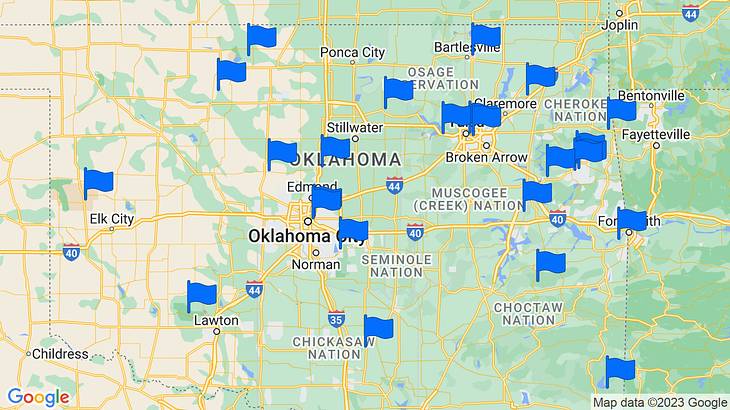
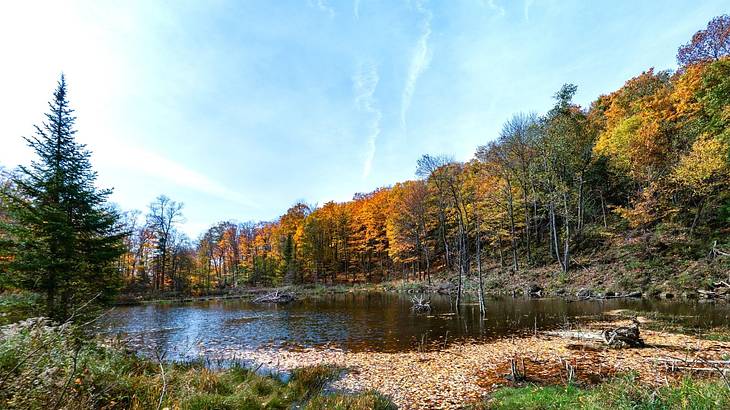
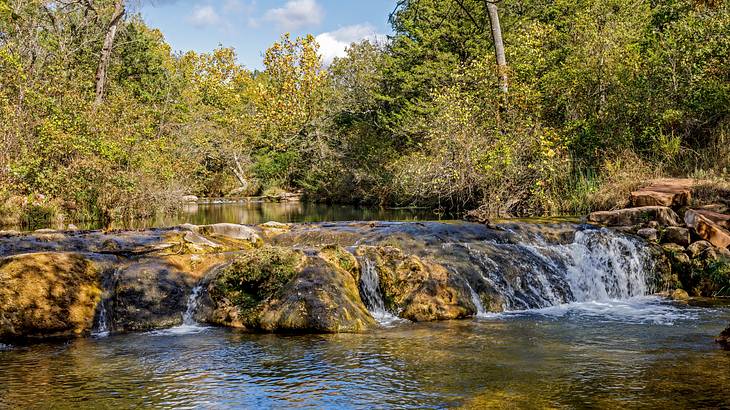
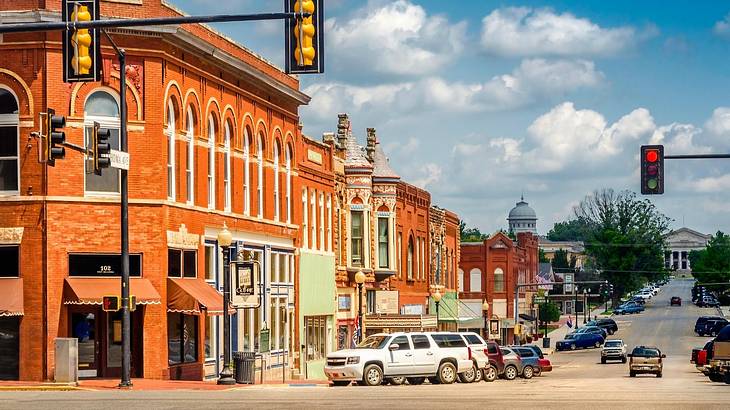
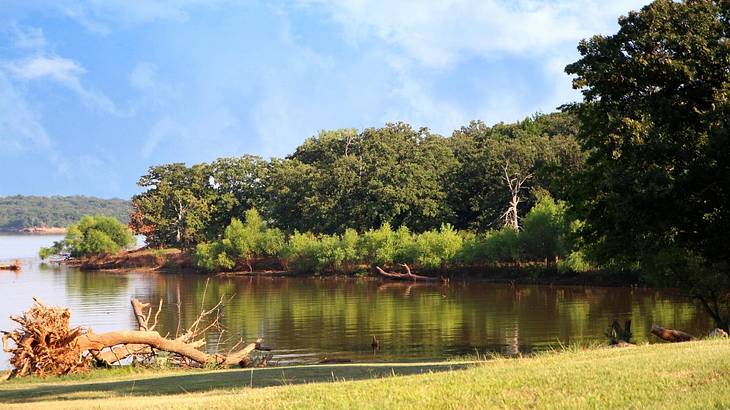


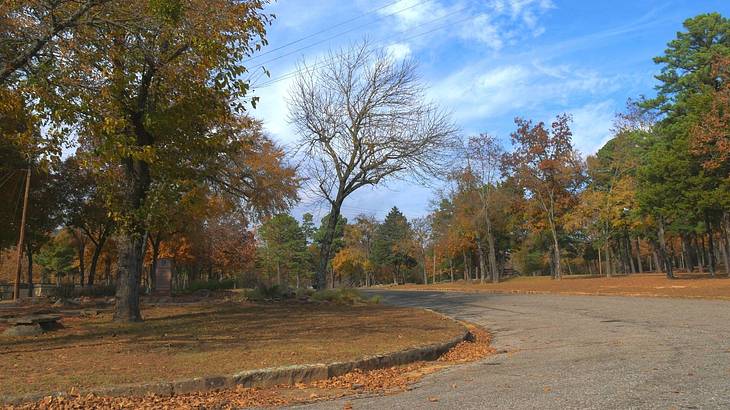
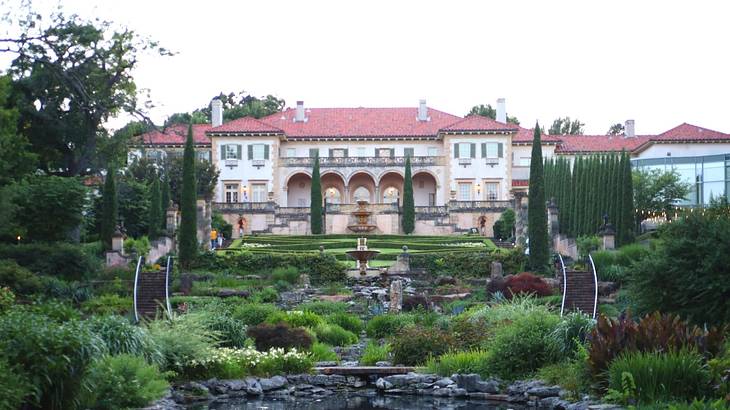
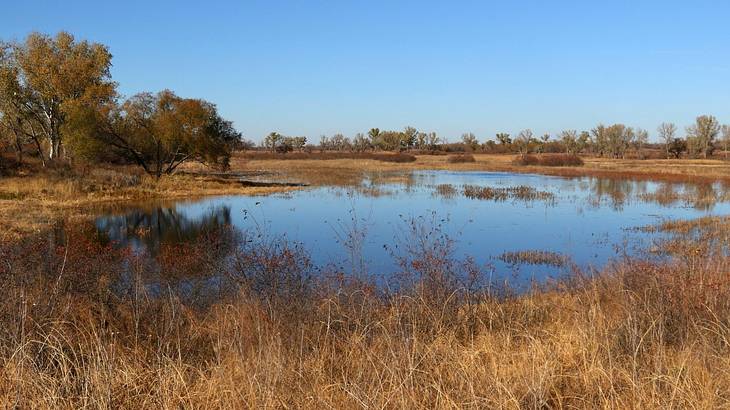
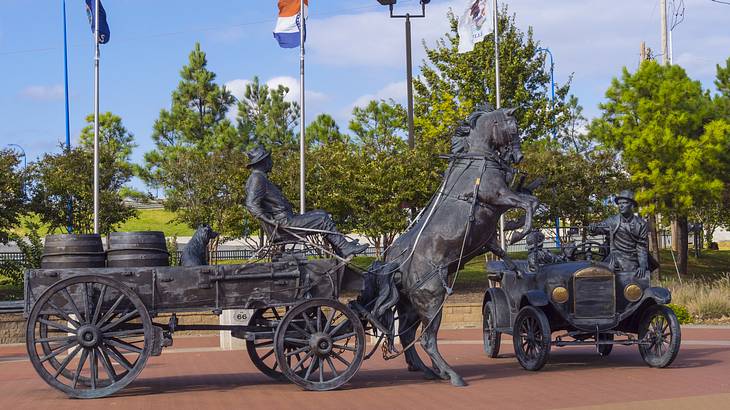
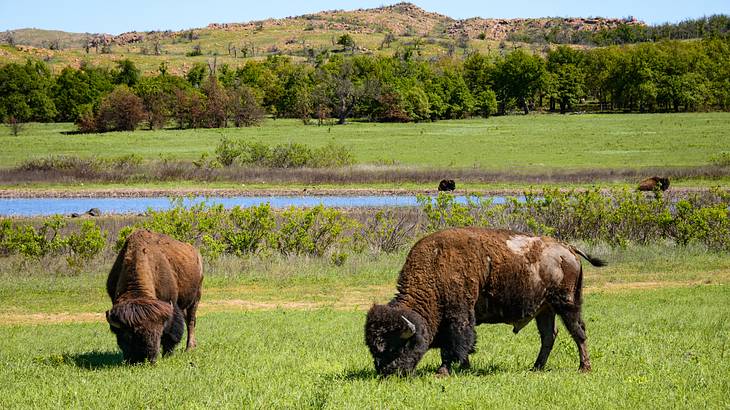
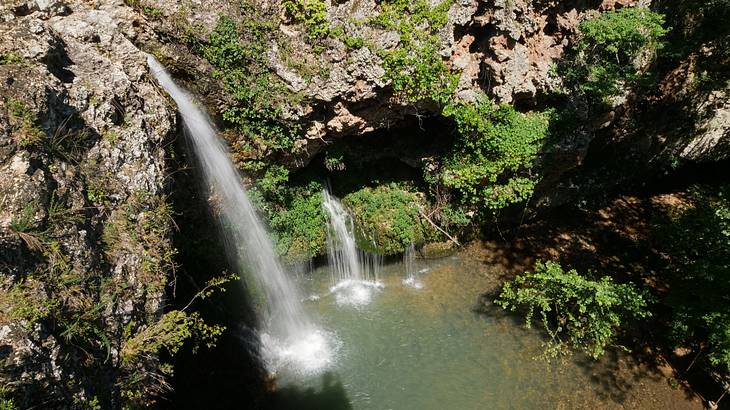
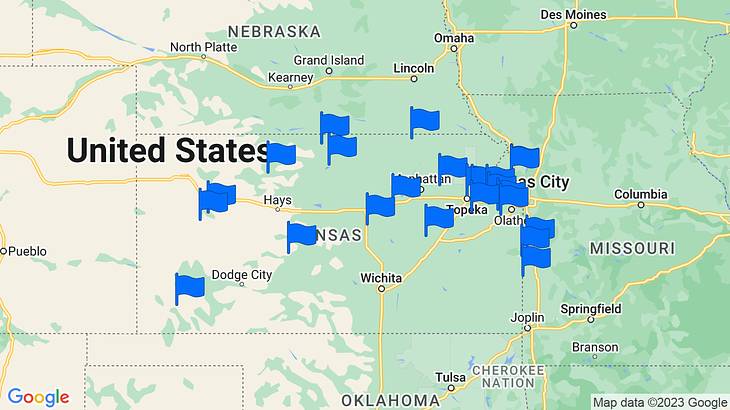
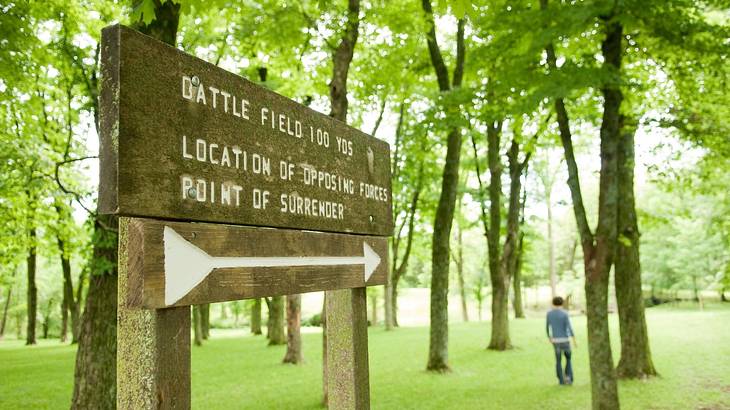
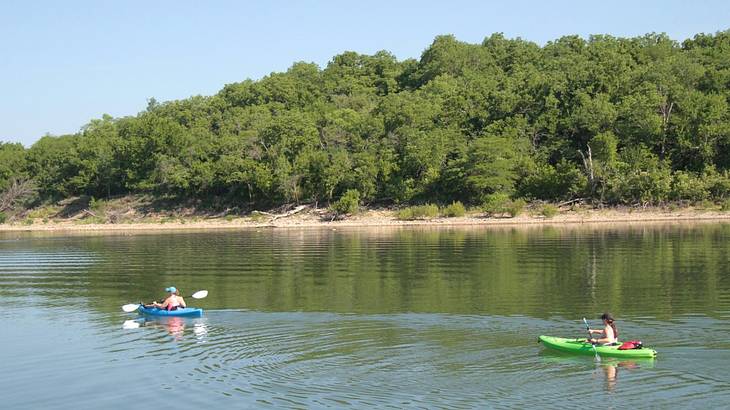
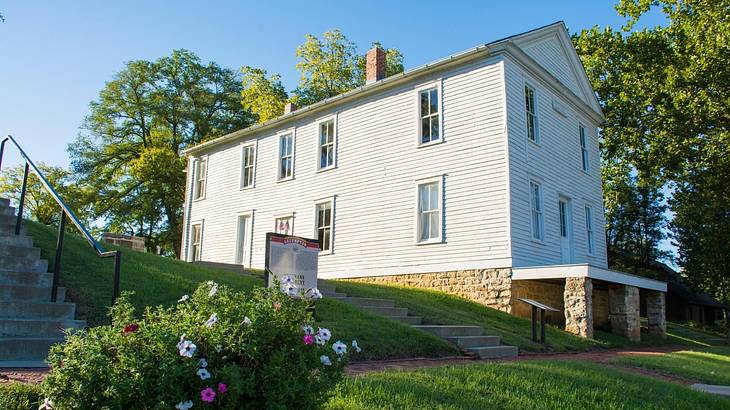
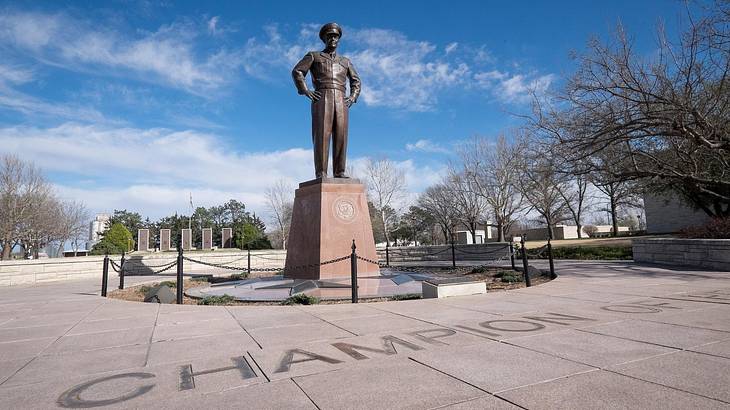
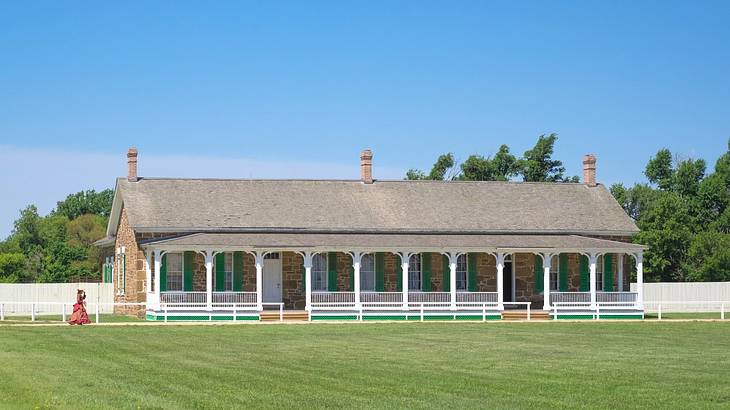
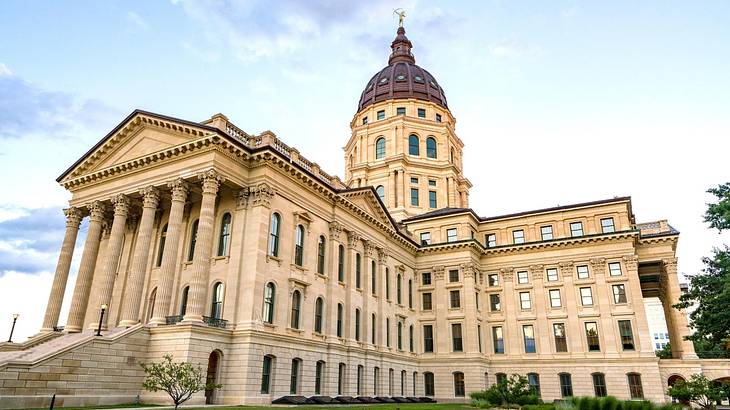

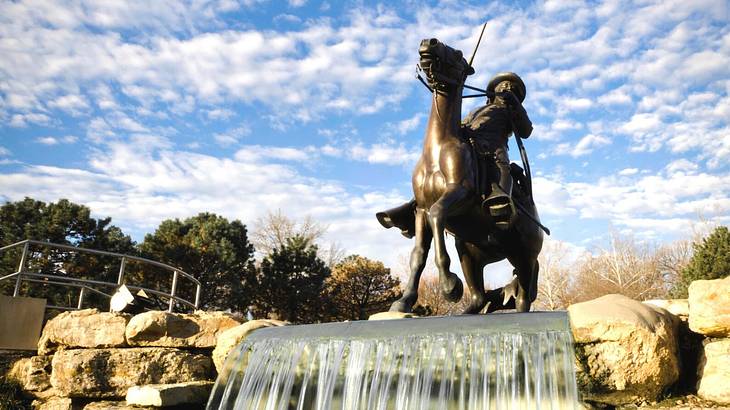
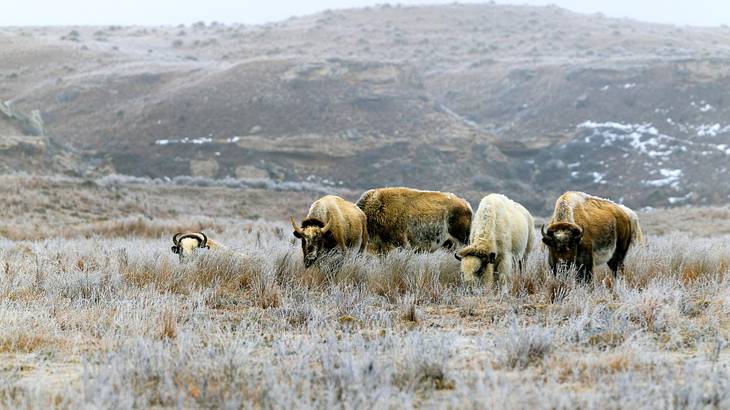
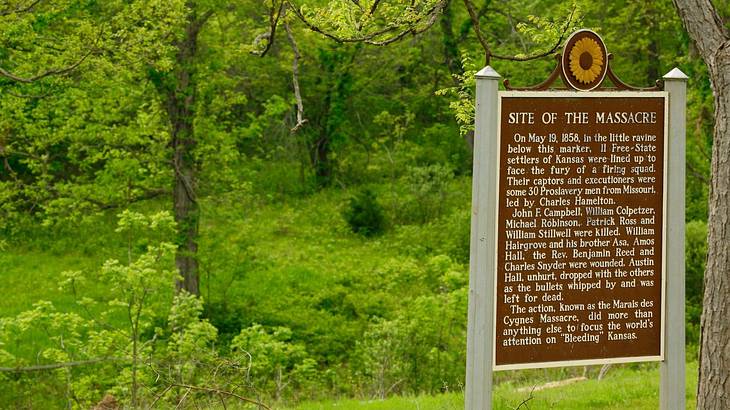
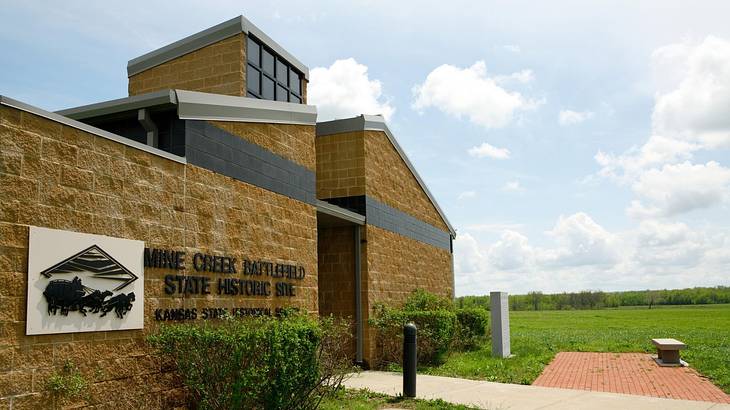
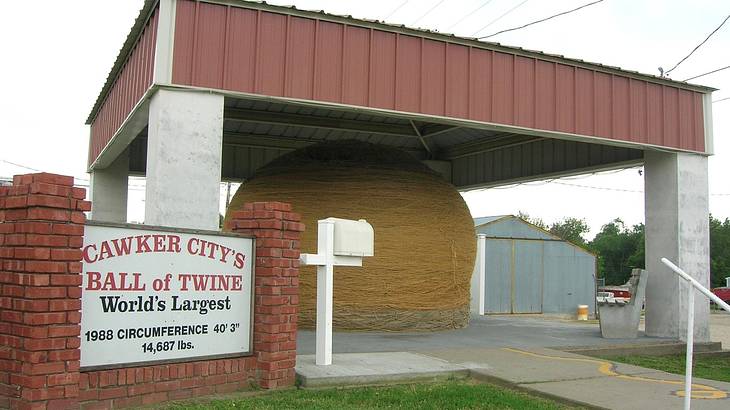
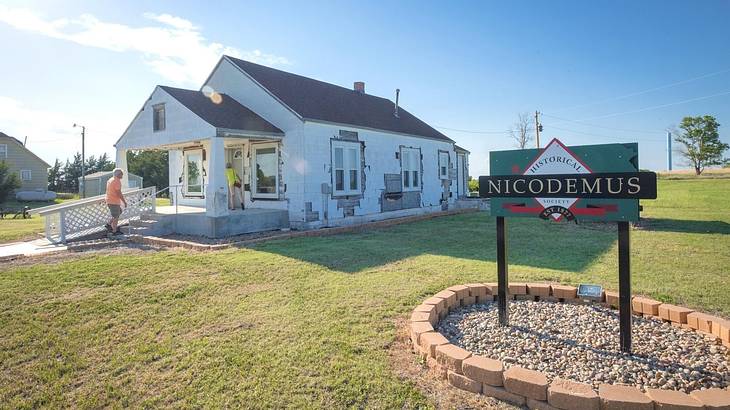
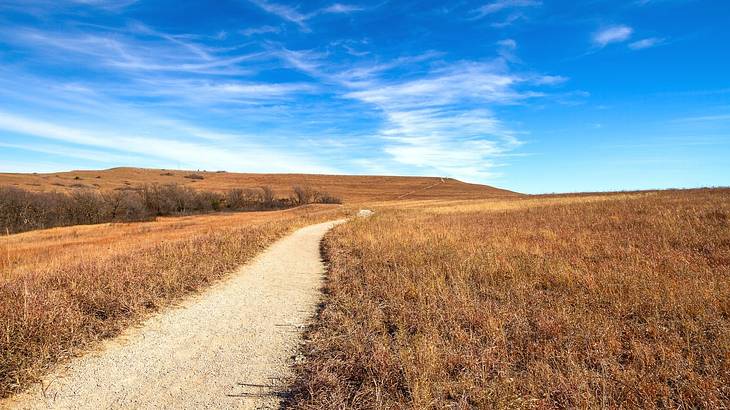
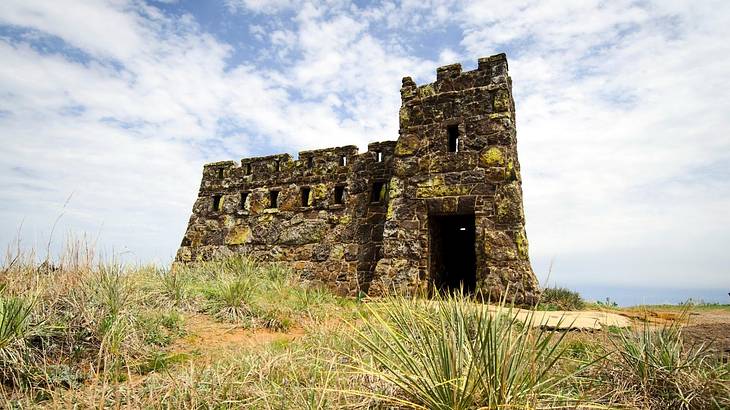
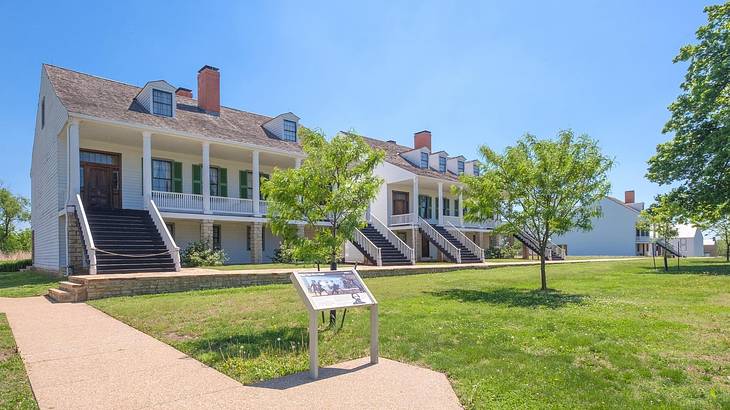
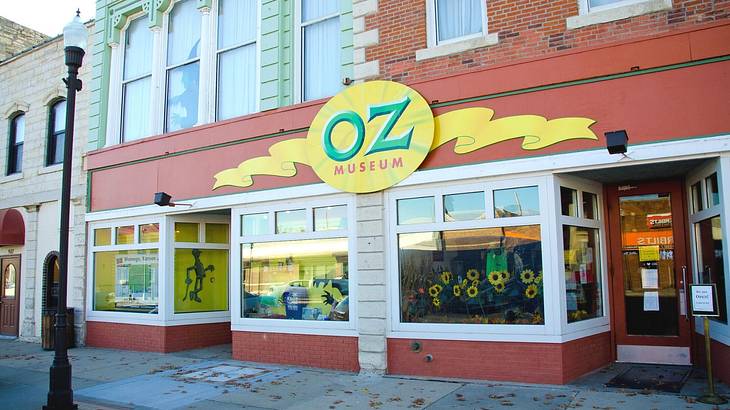
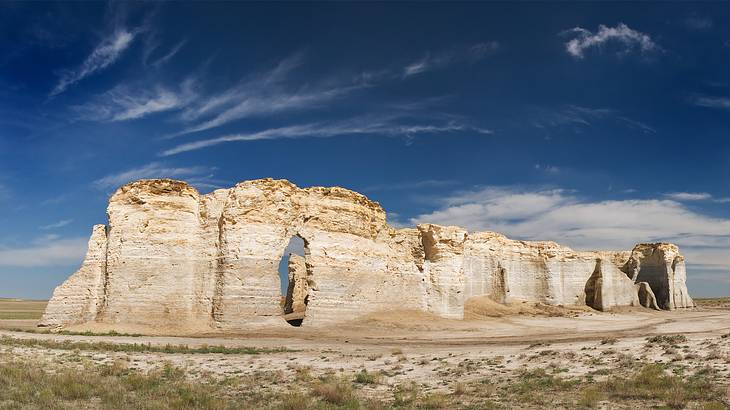
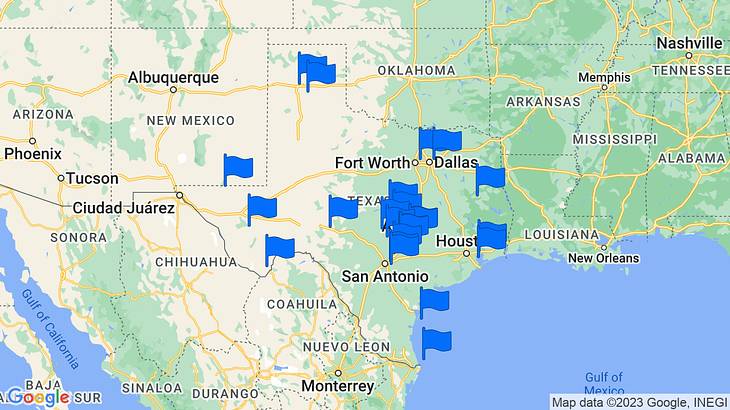

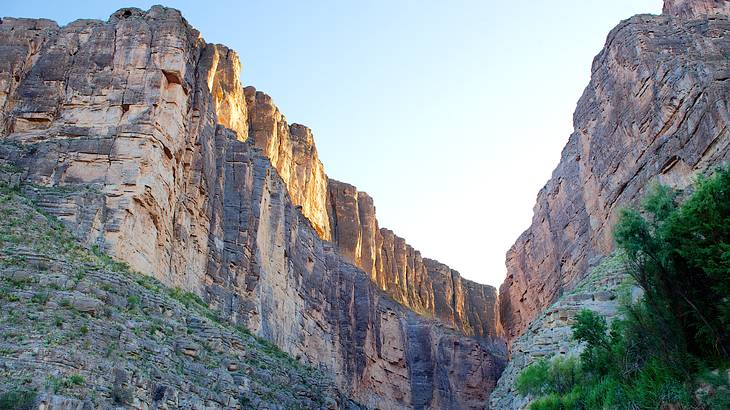
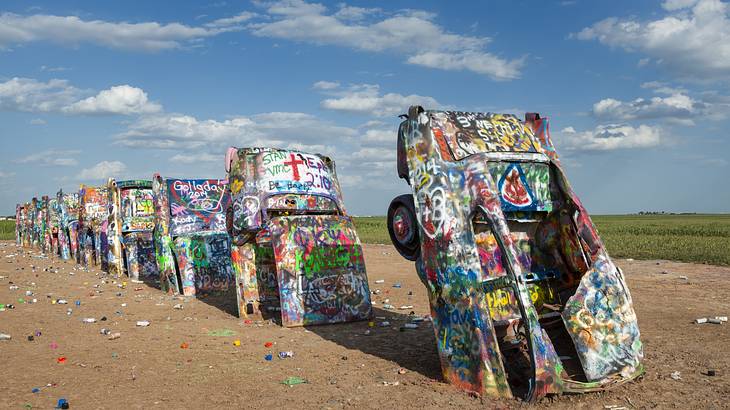
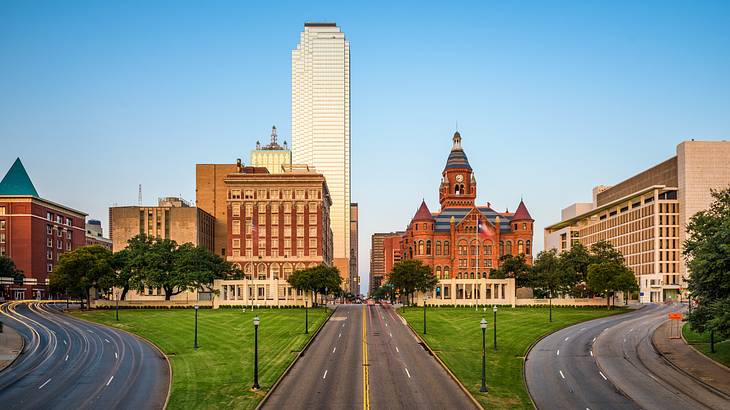
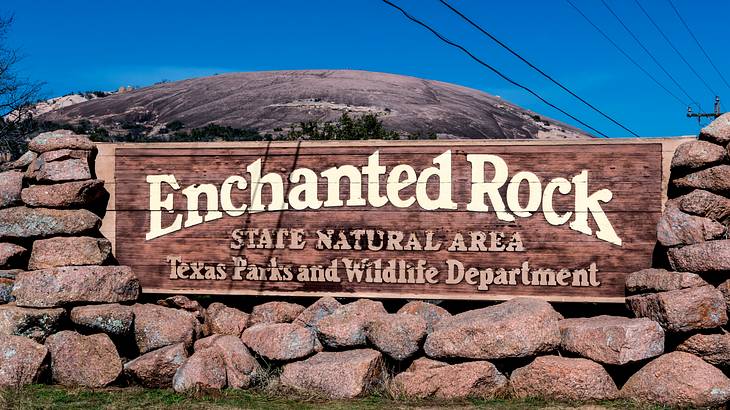
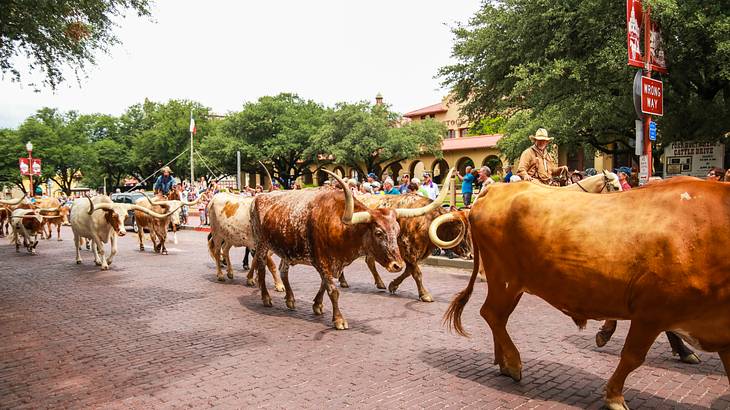
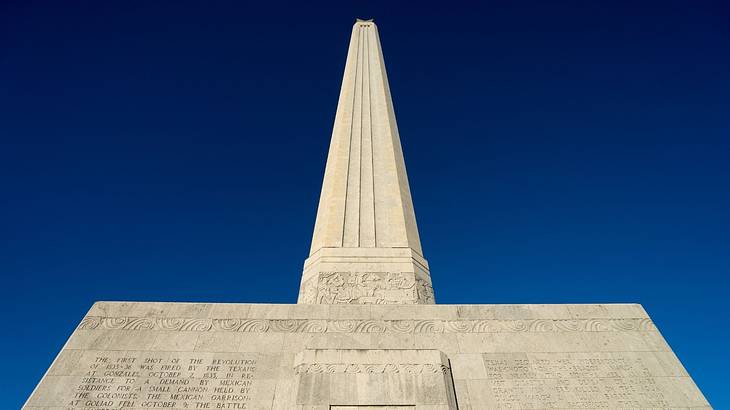
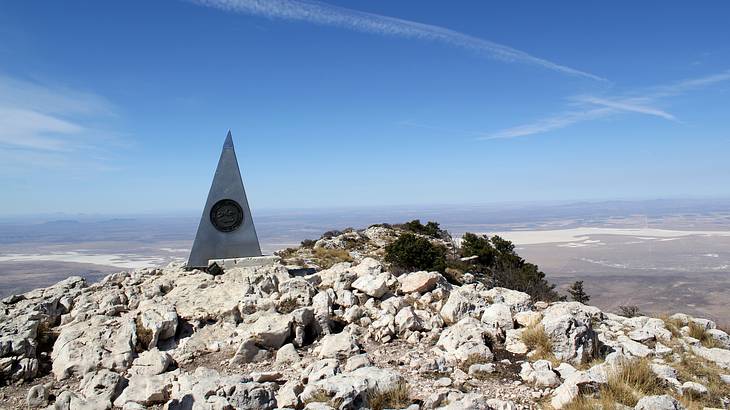




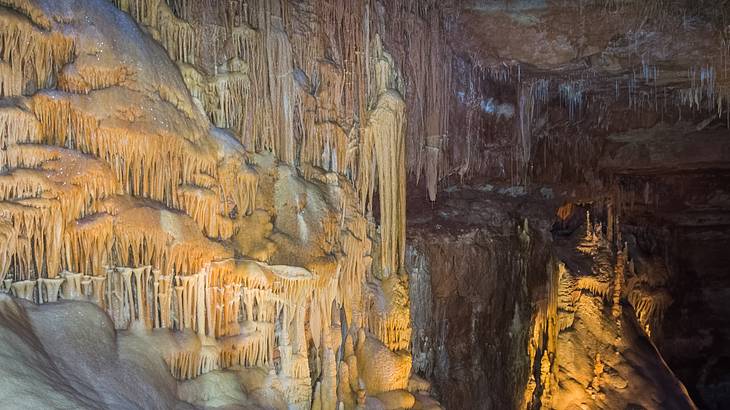
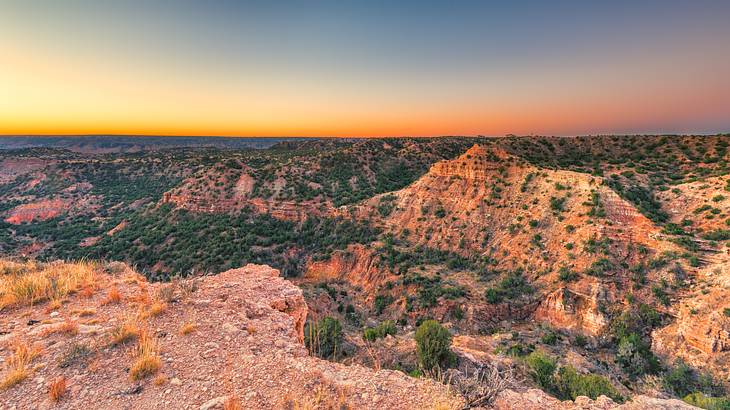
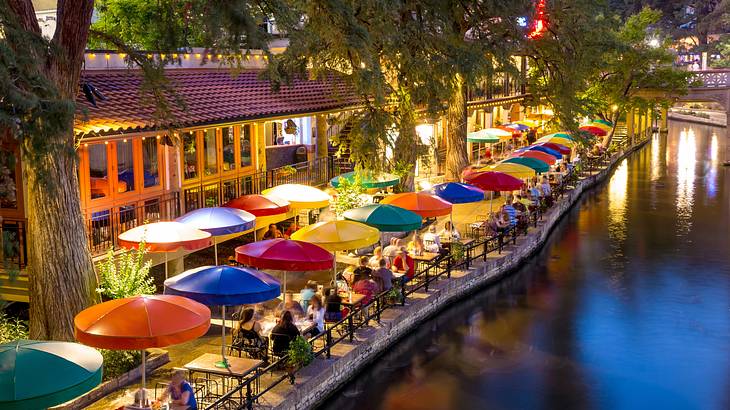
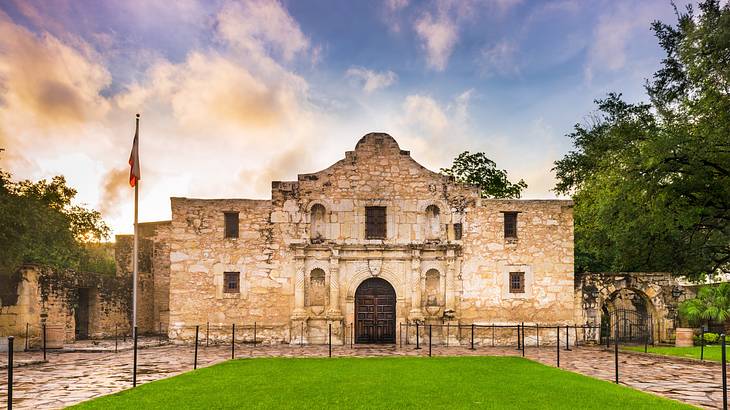


Comments
Post a Comment